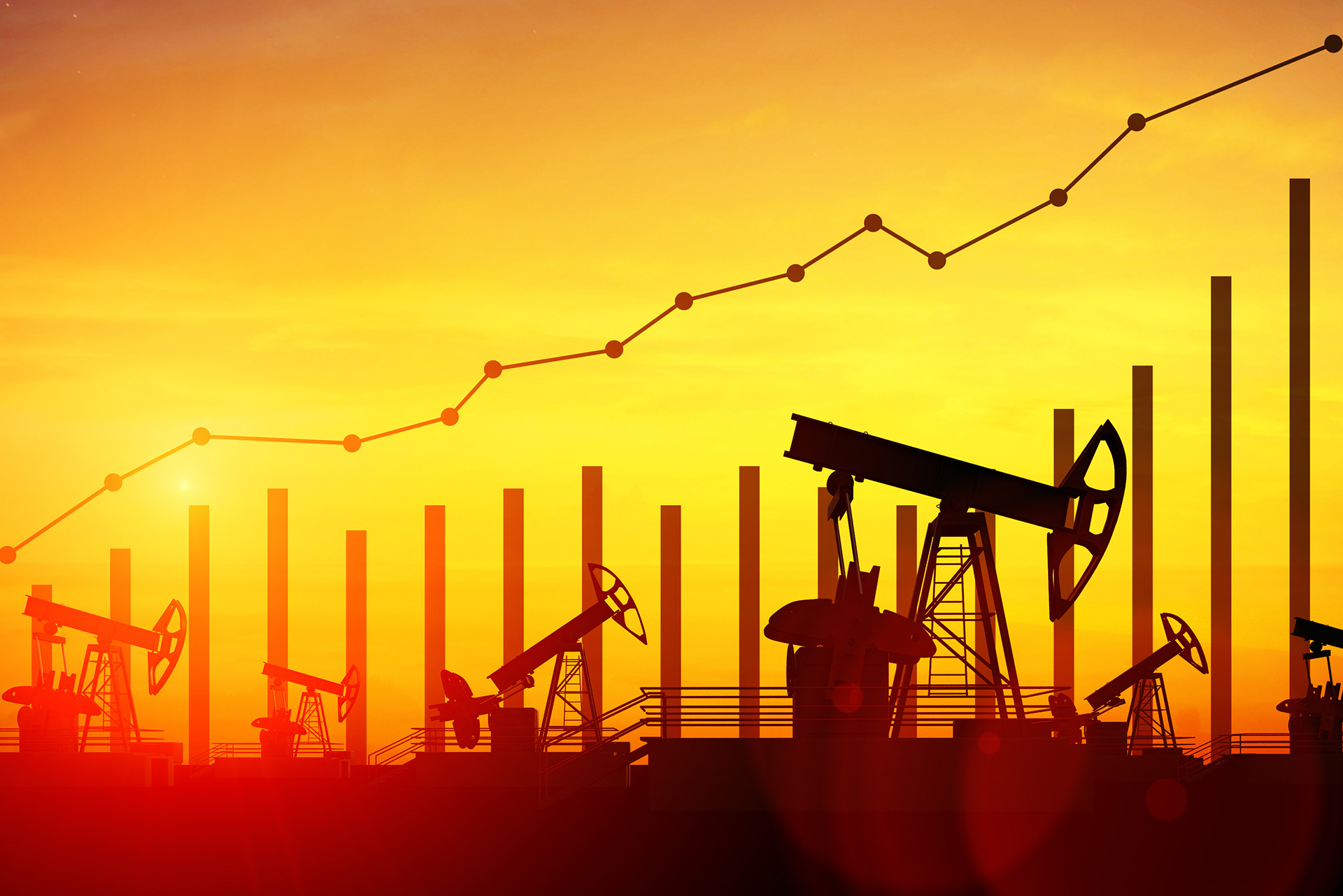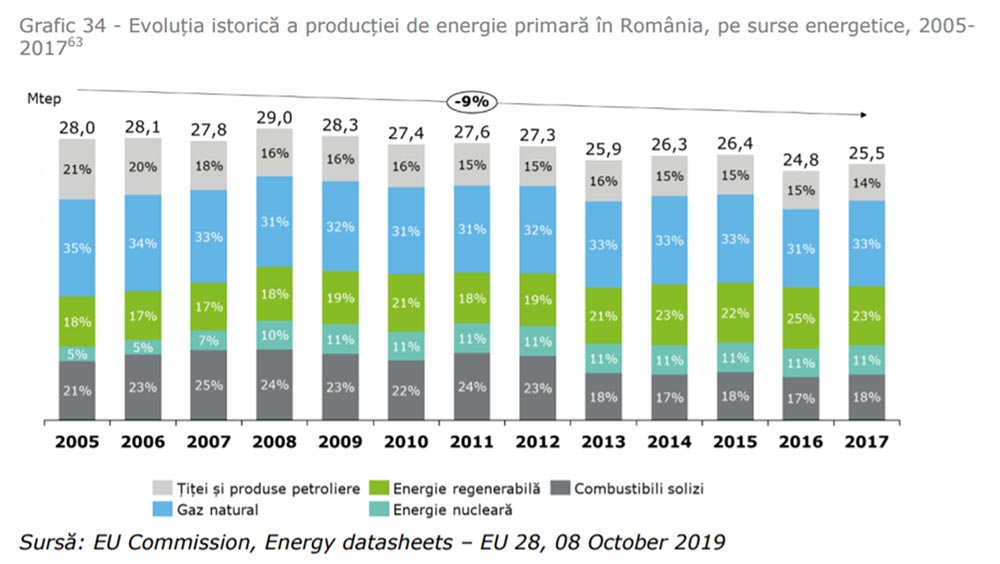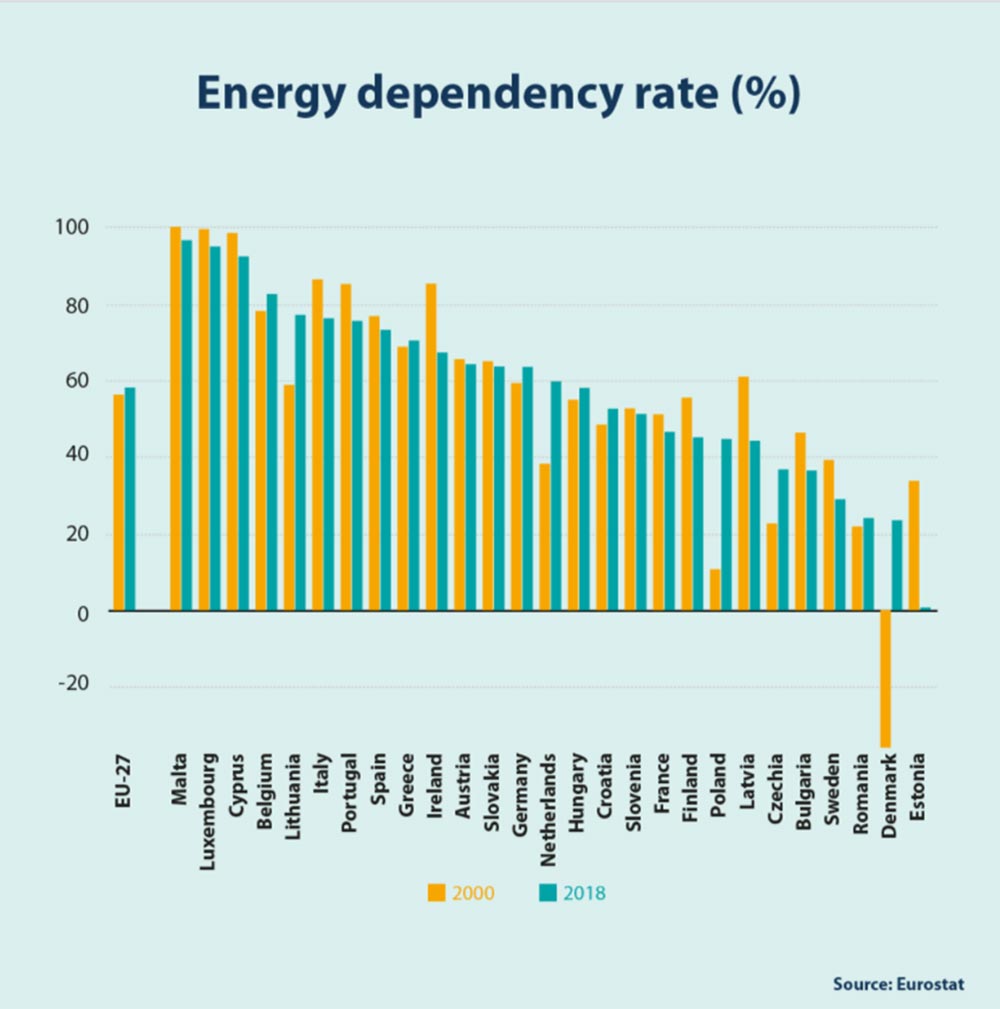Romania has a very great strength in Europe and at the same time a huge opportunity for the country: its own energy resources, especially natural gas. Thanks to them, we are one of the countries in the region least dependent on energy imports. Moreover, a very big advantage is our balanced energy mix, which gives us a high level of energy security. And the source with the largest share in total domestic primary energy production is natural gas.
"Romania has and will continue to rely on a balanced and diversified energy mix, which provides credibility for ensuring the country's long-term energy security," says the Romanian government in the draft Energy Strategy for the period 2020-2030, with a 2050 perspective.
The graph below, taken from the National Integrated Energy and Climate Change Plan (PNIESC) published by the Ministry of Energy in 2020, shows that natural gas contributes on average 33% to the primary energy production mix in Romania, with renewable energy sources in second place and solid fuels in third place.
Thanks to these resources, our country has one of the lowest levels of import dependence in the EU, according to the data Eurostat (2020). Our position on the eastern edge of NATO and the EU, in the geopolitically tense Black Sea area, makes the issue of energy security all the more important.
Romania can boast an impressive history in oil and gas, being among the global pioneers in the extraction of these resources. After more than a century of natural gas exploitation, existing production puts us in second place in the EU among producers.
Added to this are the abundant deposits discovered in the Black Sea, which, if exploited, will not only fully secure the country's natural gas needs, but can also turn us into a major energy security provider in the region.
"By harnessing the hydrocarbon and offshore potential of renewable sources in the Black Sea, Romania can become a regional energy security provider", says the draft Romanian Energy Strategy for 2020-2030, with a 2050 perspective.
From energy independence to free market conditions
On the other hand, "pnternational energy markets are undergoing dynamic and complex change on several dimensions: technological, climatic, geopolitical and economic", the document adds.
One of the most important changes Romania had to adapt to was moving from a vision of development of the energy sector based on the concept of energy independence, which was dominant until 1989 and which presupposed the discovery and exploitation of resources on the national territory, to that of energy security. The new concept came with the country's accession to the European Union and involved the transition to free market conditions.
"Thus, the main challenge for the energy sector is to reconfigure the energy system and reform the energy market to cope with market competition," the National Energy Strategy says.
This has also meant increasingly opening up the internal market to neighboring countries through interconnections or two-way flows, allowing both imports and exports of natural gas. Free movement allows for diversification of supply sources, the possibility to buy from the region if there are opportunities for lower prices, higher volumes that can be traded on the local market and consequently more competition between suppliers. In addition, it also provides responses to supply crisis situations.
Romania's interest: to use natural gas in the transition process
Also, the biggest challenge for the Romanian energy sector is now the energy transition towards a carbon-neutral Europe by 2050. Natural gas can play a key role here. Not only are they the cleanest fossil fuel, but they are also a domestic resource that can contribute to the transition to a low-carbon economy, whether in the energy sector, transport or industry.
That is why thethe European Council meeting on December 11, 2020, where EU leaders reached an agreement to cut greenhouse gas emissions by at least 55% by 2030 compared to 1990, Romanian President Klaus Iohannis said that "Romania has made sure that its interests are covered, including by maintaining the decision on the national energy mix and the use of gas in the transition process".
With some 80% of the country's thermal power plants having outlived their life expectancy, the power sector needs to modernize with new generation capacity based on state-of-the-art clean or cleaner technologies.
In this sense, Investments in low-carbon energy production, by replacing coal with natural gas and renewable energy sources, as well as the construction of high-efficiency cogeneration plants, in combined cycle technology running on natural gas, are considered a priority in Romania's Energy Strategy.
Beyond this decarbonization aspect, flexible natural gas-fired power plants can quickly cover peak demand by balancing intermittent renewable electricity generation, thus having a active role in securing the country's electricity supply.
The National Integrated National Energy and Climate Change Plan (NICIESCP) states that the European Commission has recommended a description of support measures in the energy security dimension that facilitate meeting energy security objectives with a focus on diversification of energy sources and reducing energy dependence.
The Ministry of Energy states in the PNIESC that, in order to ensure energy security at national level, Romania has taken or is committed to take measures in terms of resource diversification, namely:
- Implement swiftly the necessary legal framework for final investment decisions in the exploitation of natural gas resources in the Black Sea area;
- Adoption of the decarbonization plan proposed by Complexul Energetic Oltenia, the main coal-fired power producer - with the aim of ensuring a sustainable transition to low-carbon power generation.
"This is a priority investment project in the energy strategy, as it has a positive impact on CO2 emissions in power generation and contributes to ensuring energy security and reducing dependence on external energy resources."
Cogeneration the most efficient way to heat urban areas
Natural gas can also play a considerable role in another hugely important area in urgent need of reform: district heating. Although this sector in Romania has been in permanent decline since 1990 due to lack of investment, the trend in Europe is to support cogeneration, which has proven to be the most efficient way to heat urban areas. Natural gas CHP plants can achieve an efficiency of up to 95%, making them the most effective solution for reducing emissions in the district heating sector.
Keywords: stability, predictability, attractiveness
On the other hand, there is a very important point to bear in mind in the whole picture. most natural gas fields are mature and are experiencing declining production. And every molecule less in domestic production has to be made up by imports.
To combat the natural decline in production, huge investments are needed. Deep offshore projects need billions of euros to invest in the initial phase alone, before production actually starts. Also onshore, potential deposits are at great depths that have not been drilled before. Reaching them again requires expensive technologies and billions of euros invested.
Therefore, stability, legislative predictability and an attractive fiscal environment are essential conditions to ensure Romania's energy security.







